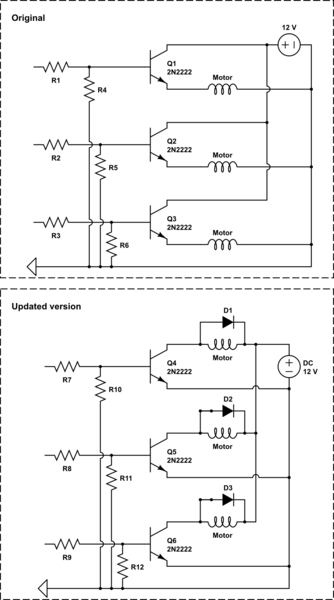Apologies in advance if this is really simple and I've missed the obvious!
I understand that there are benefits to having a resistor before the base of a transistor going directly to the common/ground (for example R4, R5, and R6). I have been successful when working with individual NPN transistors, however, I found that when they're wired the way they are in the schematic, it caused issues with the other transistors becoming unpredictable even when they're supposed to be off; which makes perfect sense I think. Is there a way to do this that works as intended?
R1, R2, and R3 will be receiving PWM input from an Arduino to control a 12v supply going to several motors. Common/ground is going to the Arduino GND pin too.
It was around two years ago when I last did anything to do with electronics, so I am little rusty; I just wanted to see if I can get it right before starting without head-scratching for hours over something hopefully simple!...
Thanks for any help! Much appreciated!
Edit: I've left out the fly-back diodes and resistors for the motors to keep the schematic simple.
Edit: "Updated version" schematic is in response to Tony's reply.
Final Edit!: Re-added that I left diodes and resistors out of the original schematic to reduce clutter.

simulate this circuit – Schematic created using CircuitLab



